I really like the look of that nest.
Yeah, it's great! It's Aeacus Corinth small (v1), FYI.
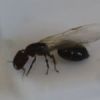
I really like the look of that nest.
Exactly one week after the first pupa, eyes became apparent (7th Jun).
The photo is from two days later, so you can spot many pupae ogling you ![]() .
.
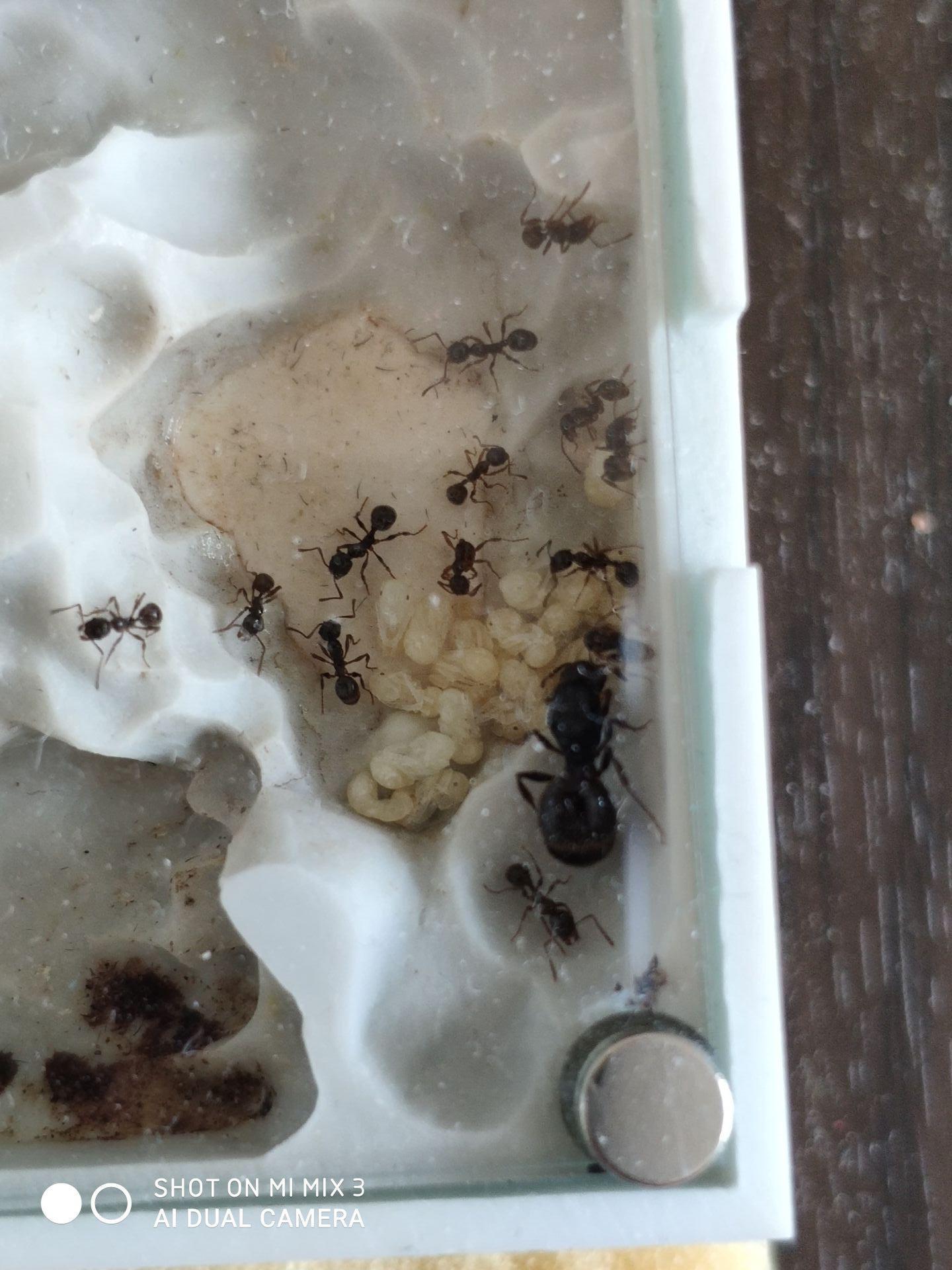
16 days after spotting the first pupa, the gasters are turning brown. Just last night they weren't.
Temperature is now 24 C (75 F) and humidity in high fifties (61% at the moment).
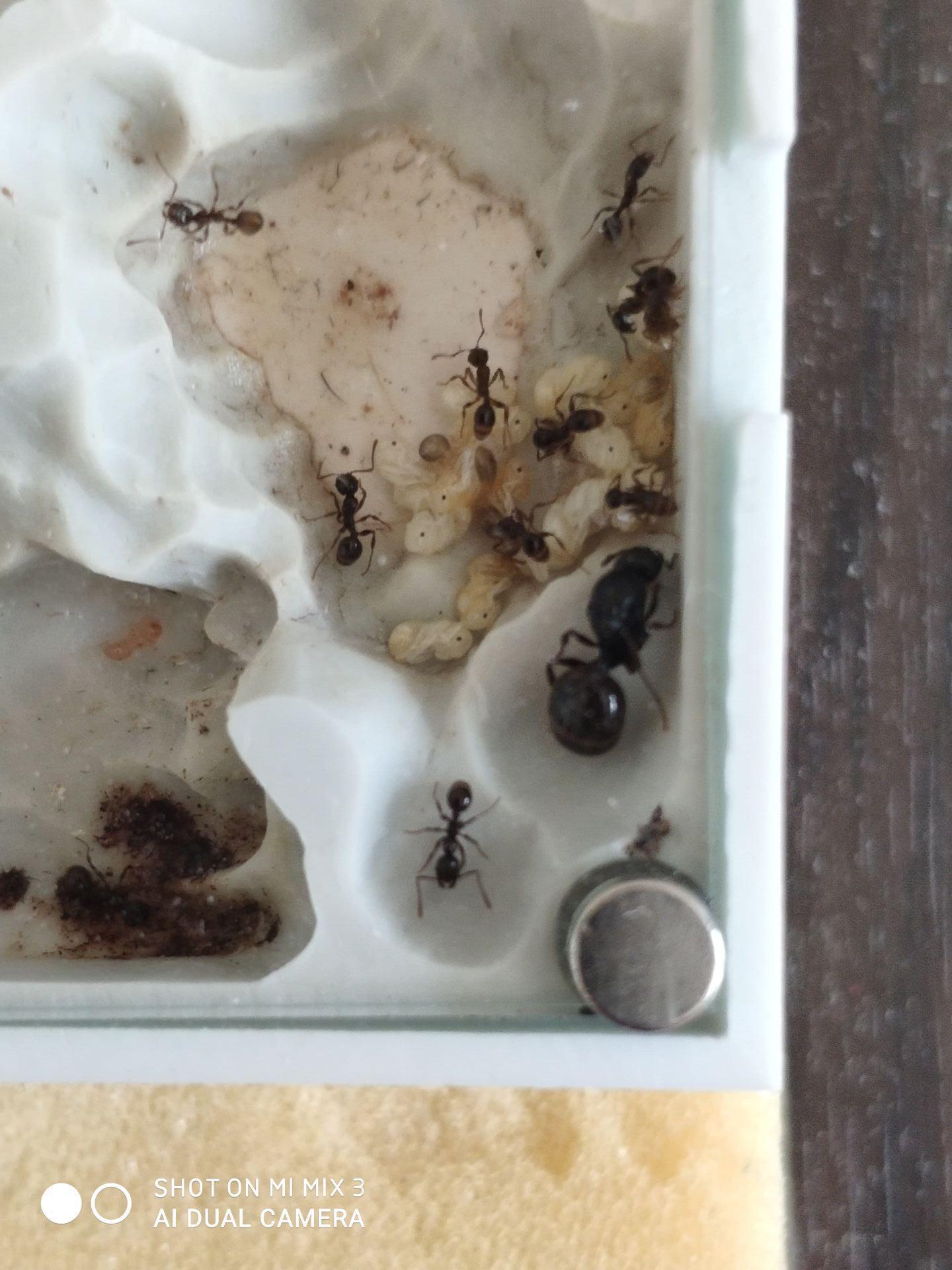
It is now 25 C (77 F) and I have noticed significant speedup in development times of all my colonies.
The first workers have enclosed yesterday - 22 days after the first pupa was spotted! The pupae turned dark brown some 17-18 days in- the same colour of the workers. I almost did not notice them enclosing as there doesn't seem to be any difference in colour between just enclosed ants and the old ones. In other species I had, the newly enclosed ones are pale for at least a day before they darken.
I noticed the nest to be "more crowded than before", and upon counting them, I realised there were 17 where 13 had previously been.
There are still dark pupae on the way, together with some still pale ones and new larvae.
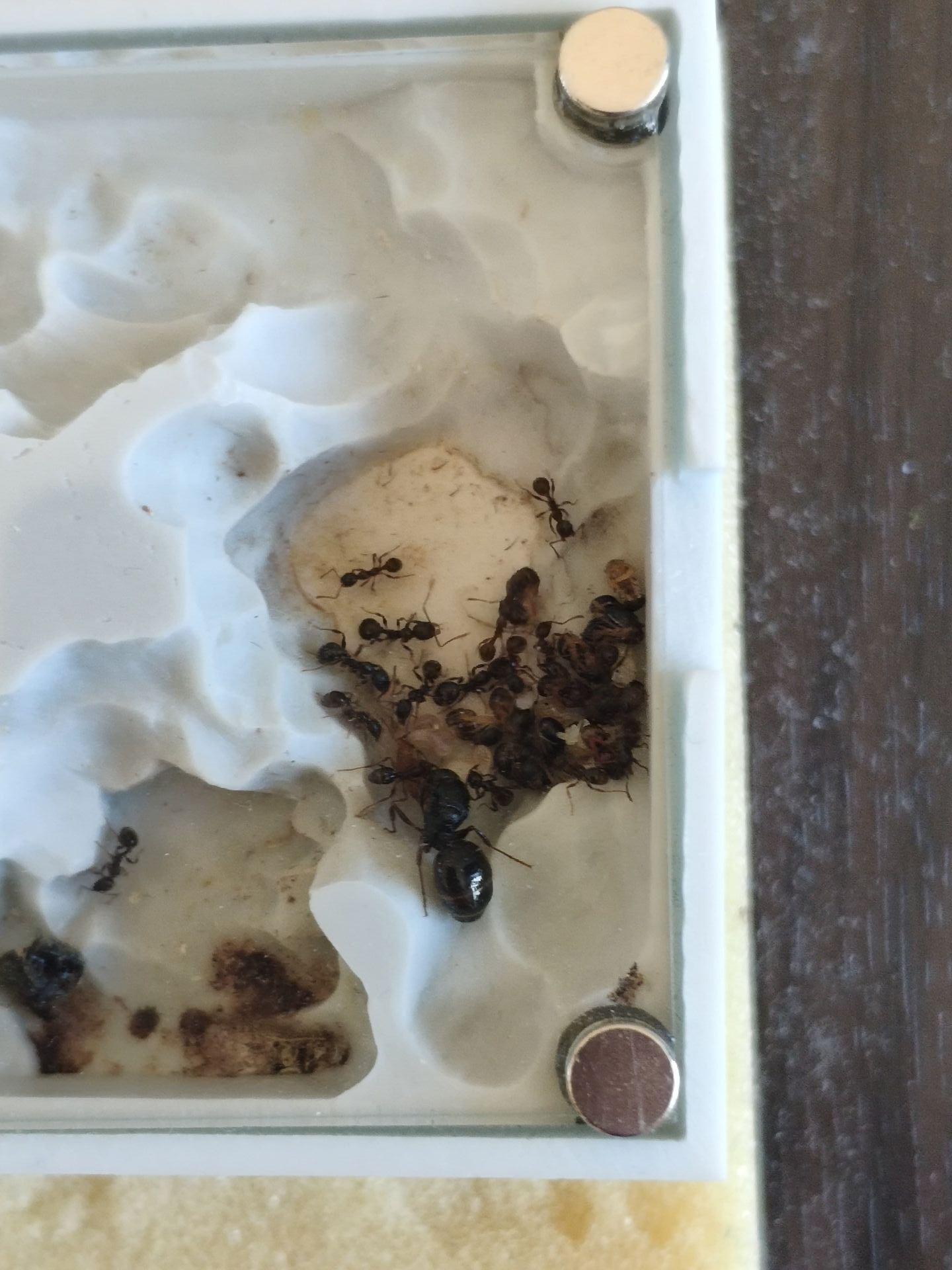
It's 28 C (82.5 F) in the house now and the development of all my colonies has exploded!
All the old pupae have enclosed, and new larvae are on the way.
The colony has 30 workers now!
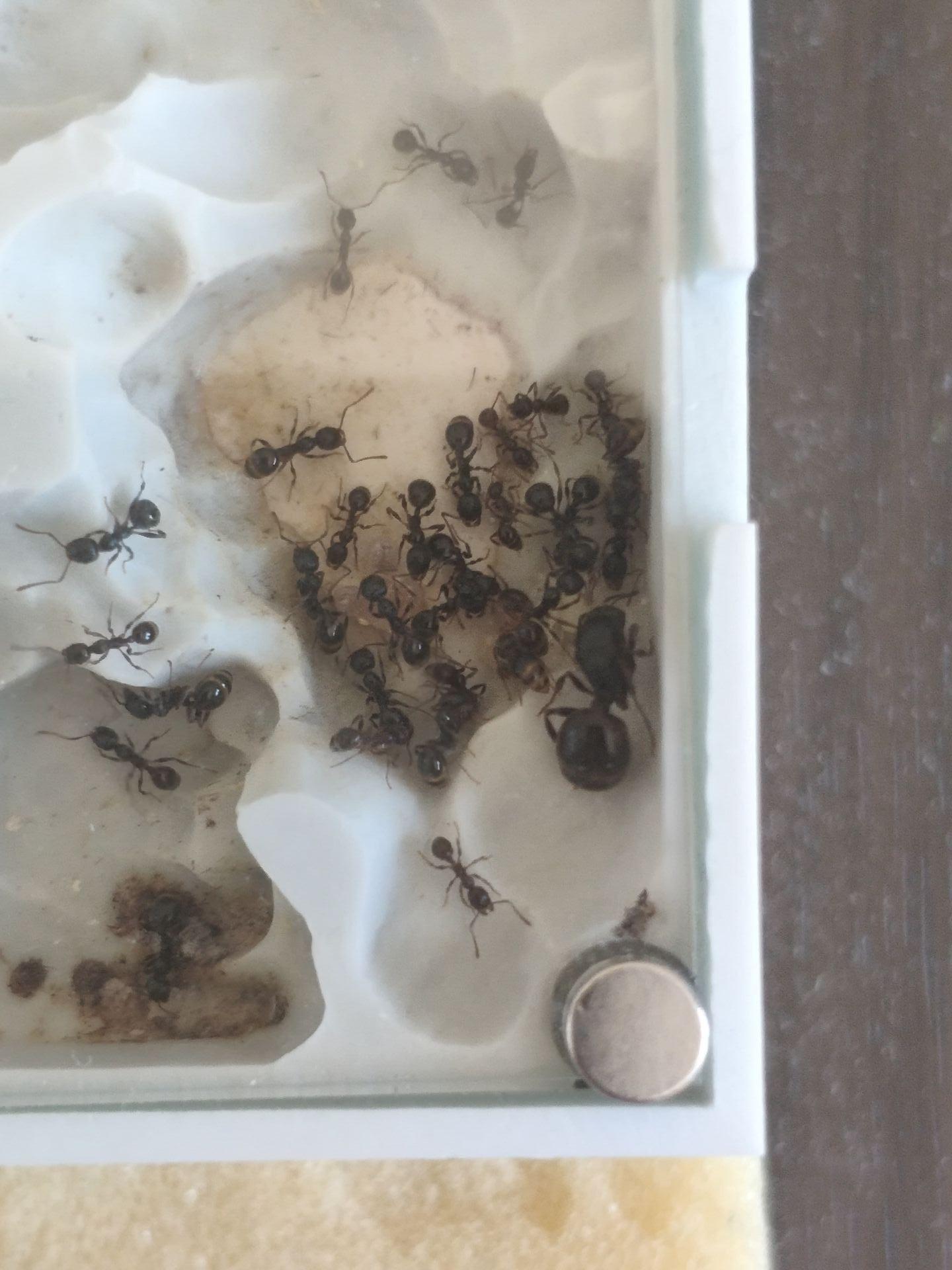
The colony has entered some kind of stagnation. The queen is not producing new eggs and the workers don't forage (never did, really).
The species is clearly nocturnal, almost never have I seen a worker outside the nest.
I have moved them into a test tube, as I had some rust problems with my makeshift fastenings on the underside of the nest. It is possible the humidity is not sufficient, as they all snug all the way to the cotton.
I will soon move them back, and that could kick them off again.
The winter is coming, and the colony has kicked out of stagnation and made a new batch of eggs?! The eggs are already larvae now.
It is very interesting, as I remember the queen being caught late in the summer, and she laid eggs before hibernation. That was very odd to me as I believed her to be a Messor at the time.
I don't understand what the survival tactic of this species is. They are pretty inactive and don't forage farther than an inch from the nest. Literally an inch. Since they are mostly carnivorous, and don't hunt, the only strategy I can think of is relying on sheer luck that some unfortunate bug croaks right next to the nest.
As the weather is getting colder, I have noticed a drastic increase of flies and bugs entering people's homes in search of heat. Perhaps the impeding mass dying of insects is the season of plenty for the Aphaenogaster. If so, it would make sense to lay a big batch of eggs now.
The colony has around 40 workers, so I would think it should be big enough to send scouts out at all times, but nope.
Does anyone have experience with bigger colonies and whether they turn more aggressive with size?
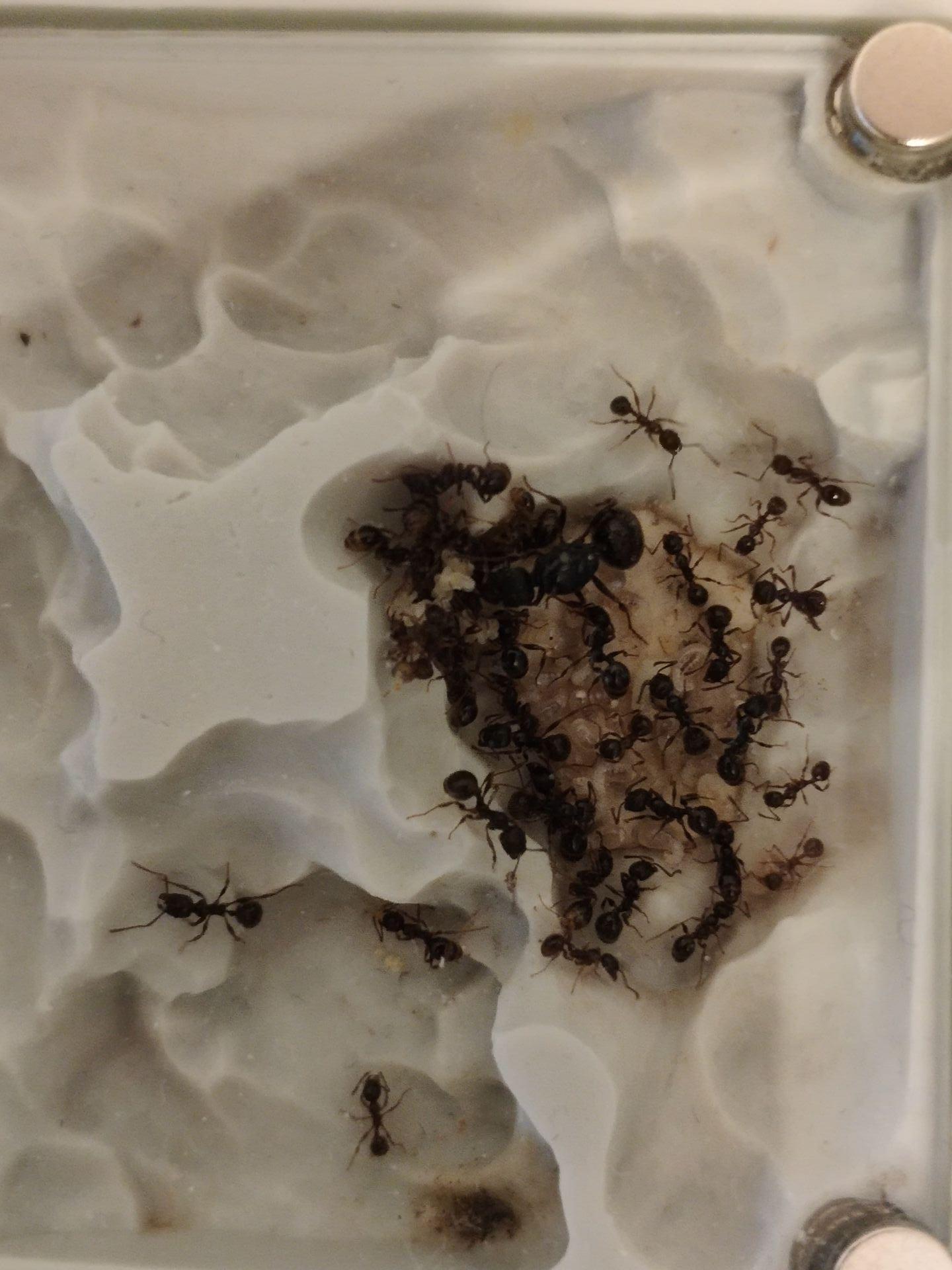
Diapause? nah. 40 workers, 2 pupae, lots of larvae and a new batch of eggs?!?
Here they are, feasting on some protein jelly. They are the only species I have that like the jelly.
They are in a room that is not heated, window open, so natural temperature... weird.
It's possible the queen lied the eggs as winter food for the larvae.
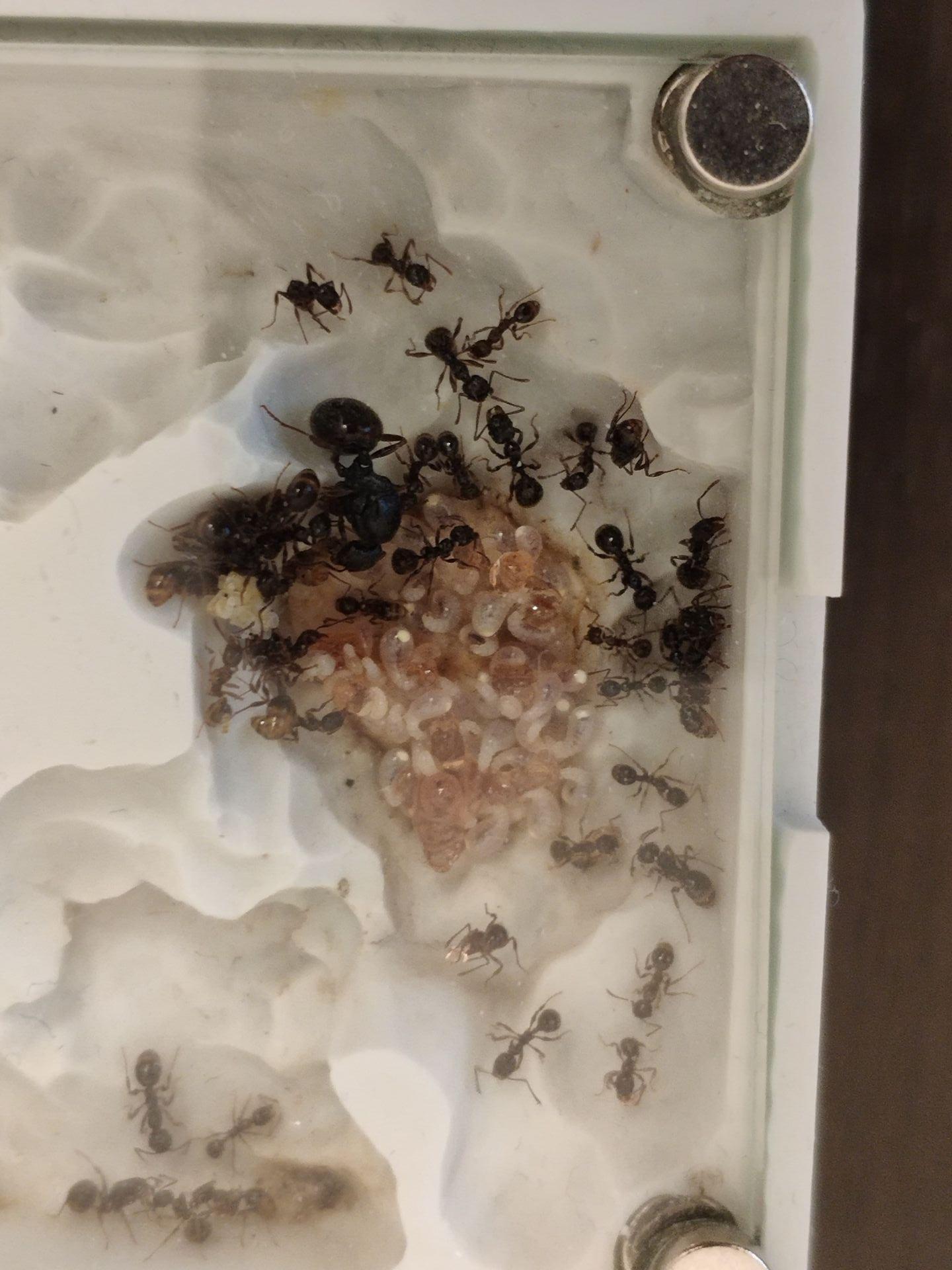
I've noticed this same thing with Aphaenogaster. They will stay active and produce new workers and brood all year long. I don't know why, but it is pretty cool.
My Main Journal | My Neivamyrmex Journal | My Ant Adoption | My YouTube
Join the TennesseeAnts Discord Server! https://discord.gg/JbKwPgs
I've noticed this same thing with Aphaenogaster. They will stay active and produce new workers and brood all year long. I don't know why, but it is pretty cool.
Wow. That is cool. I will have to think of a source of protein for them over winter. Hard boiled egg comes to mind...
It's almost Christmas, yet the colony still takes protein. As Ant_Dude said, it will probably continue to be a thing. I got them some slow dried crickets for reptilians in a local pet shop. I'm thinking of soaking them in water and then offering them to the ants. We'll see if they'll like it.
I caught some flies and some tangerine worms and they were happily accepted. In the photo you can see the little chubby, burping infants.
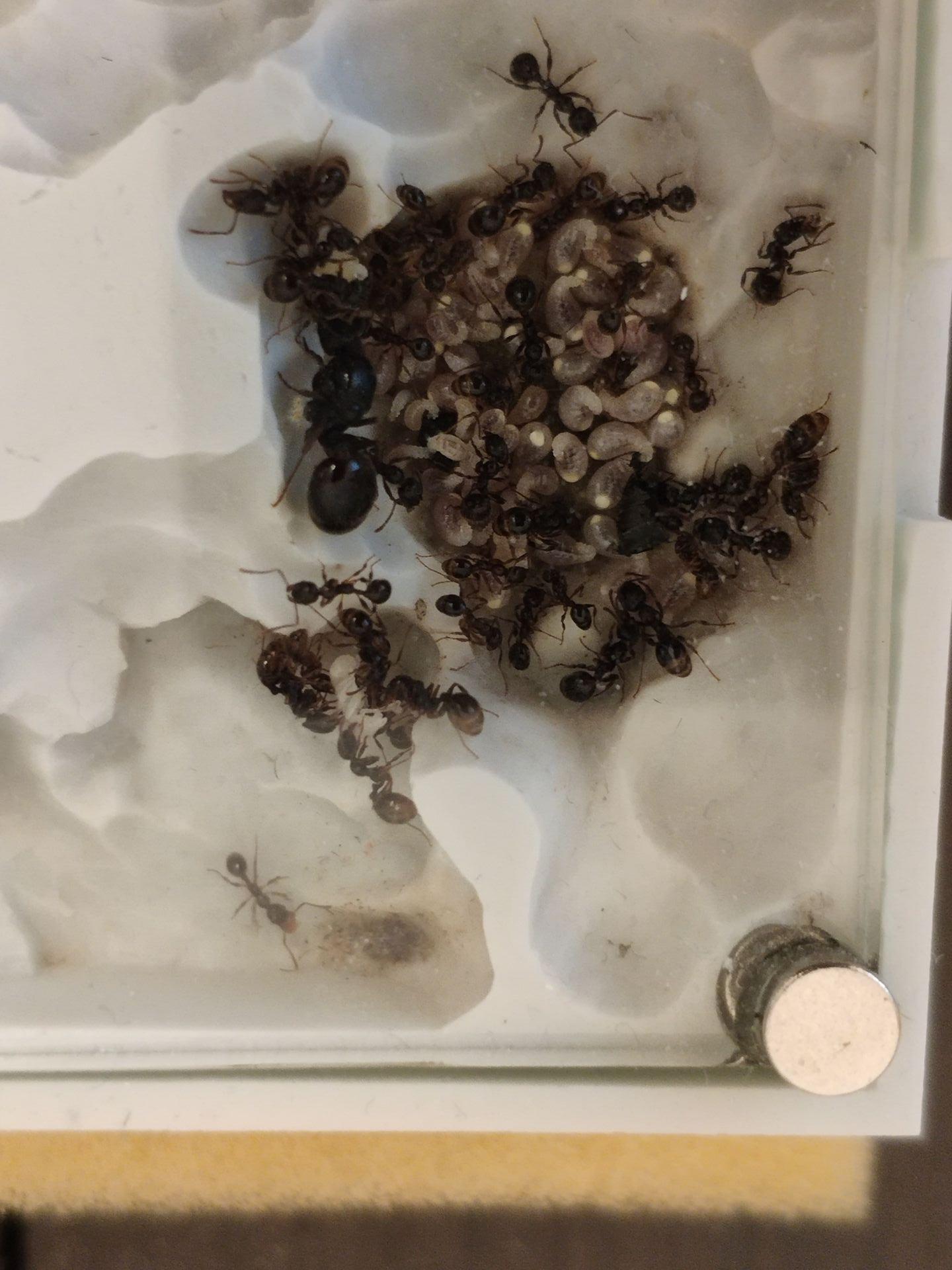
Some workers tending to a sister pupa.. a little too enthusiastic, don't you think? The pupa looks too pale to be ready to enclose. Well, hopefully all is well and they are not devouring it haha.
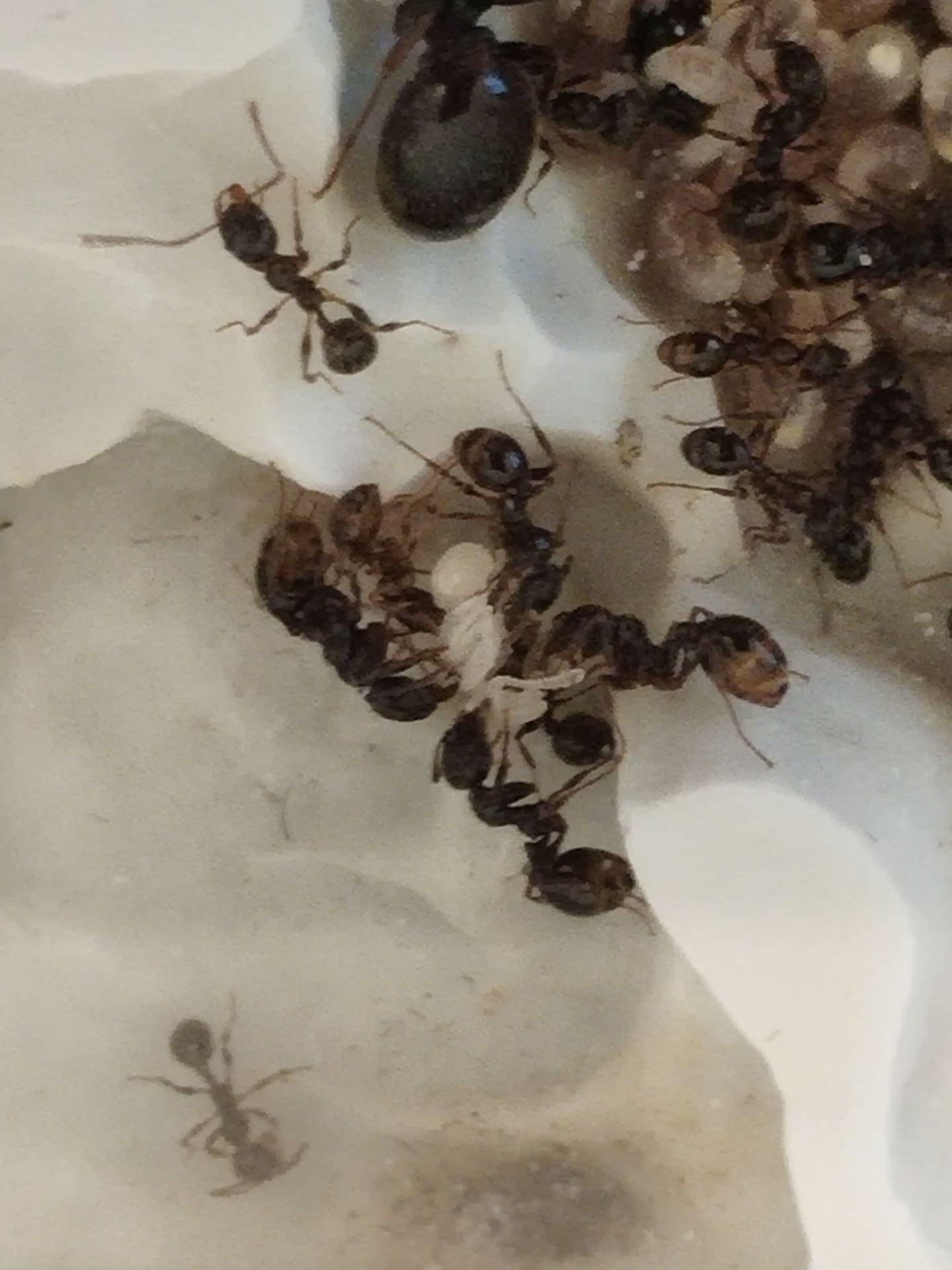
that is an amazing colony! i love the look of aphaenogaster pupa! i have a colony of rudis i need to take more care of this spring.
Go to the ant, you sluggard; consider its ways and be wise! It has no commander, no overseer or ruler, yet it stores its provisions in summer and gathers its food at harvest. -Proverbs 6: 6-8
My Ant Shop Here I have PPQ-526 permits to ship ants nationwide
Attention Ant-Keepers in South Dakota! Join the SoDak(Society Of Dakotan Ant Keepers)
I'm loving the progress of this colony! Nice journal!
So far, I haven't really bothered with providing them with sweet liquids. My initial attempts were ignored, so I guess I neglected it for a while.
I did put in a honey-water feeder today, and they actually went out to forage in group. I rarely observed more than one worker in the outworld, if that.
There are four of them at the feeder right now. Some drinking, some sticking trash onto it.
Just goes to say that if a species does not like sweets, it doesn't mean they shouldn't get it every once in a while.
I've had a similar experience with Messors before.
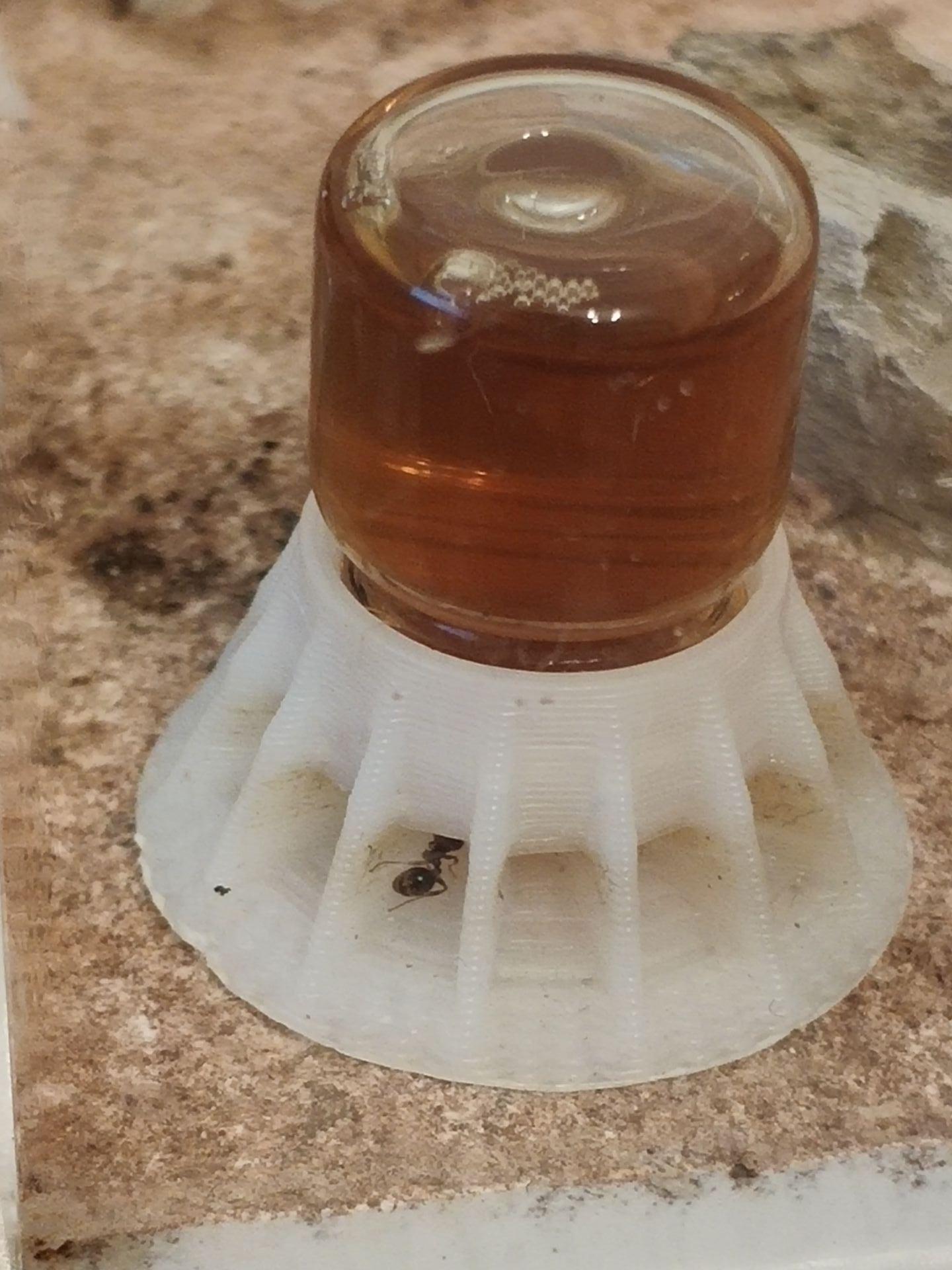
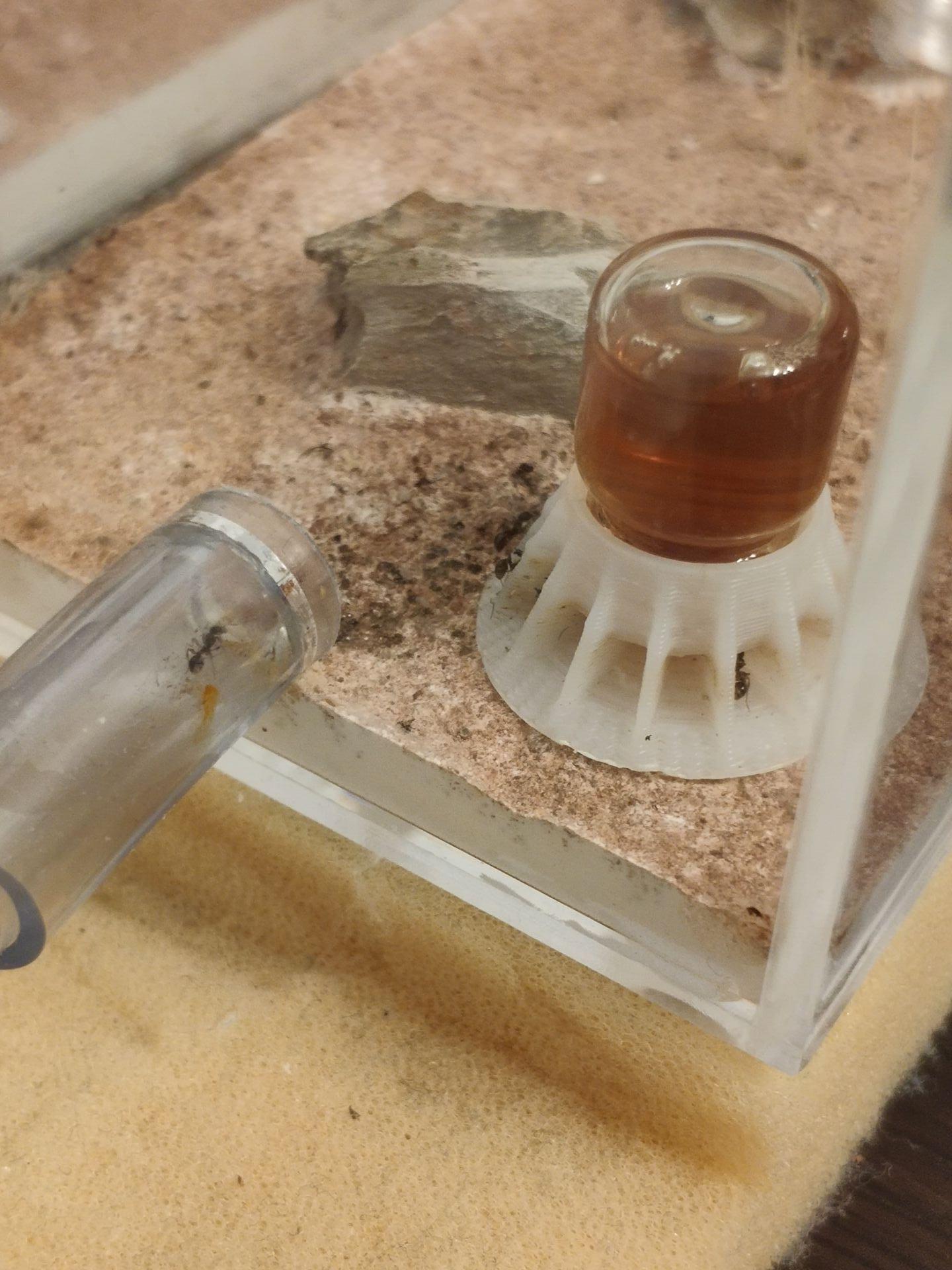
Ant Keeping →
Ant Keeping Journals →
cooIboyJ's Nylanderia vividula journalStarted by cooIboyJ , Sep 6 2025 |
|

|
||
Ant Keeping →
Ant Keeping Journals →
Ants_Dakota's Camponotus sp. JournalStarted by Ants_Dakota , Jul 13 2025 |
|

|
||
Ant Keeping →
Ant Keeping Journals →
Strickys Formica JournalStarted by stricky_ants , Jun 21 2025 |
|
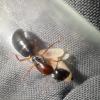
|
||
Ant Keeping →
Ant Keeping Journals →
AntTx's Camponotus sansabeanus JournalStarted by AntsTx , Jun 17 2025 |
|

|
||
Ant Keeping →
Ant Keeping Journals →
The Bark Battalion (Liometopum occidentale)Started by AntsGodzilla , Jun 3 2025 |
|

|
0 members, 1 guests, 0 anonymous users